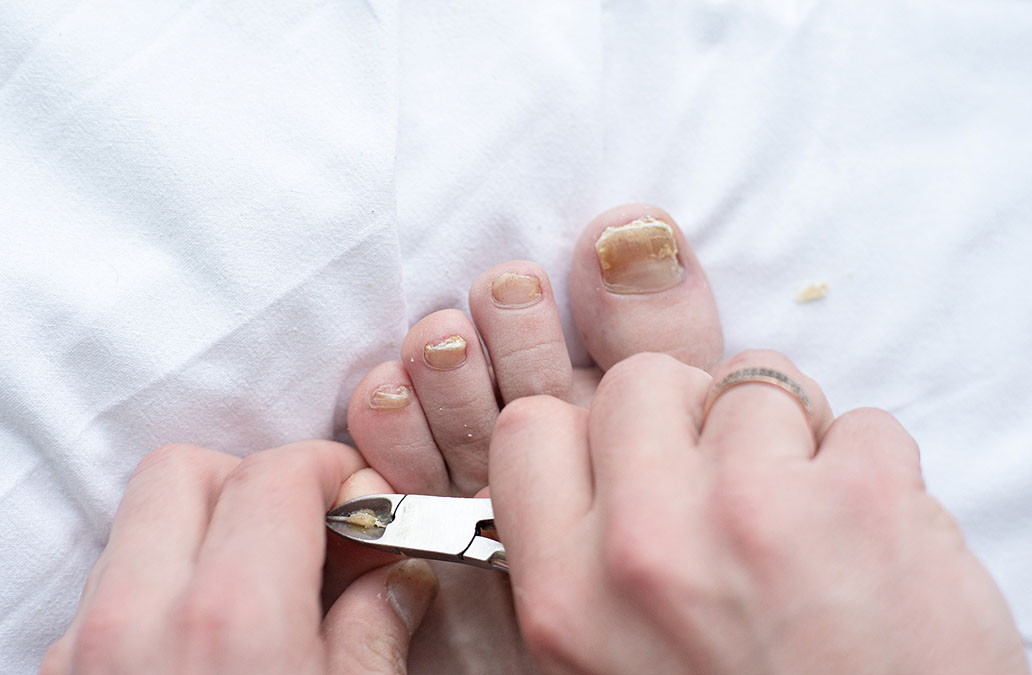 Diabetics have many health concerns. Nail fungus may often be ignored as among the less severe of these concerns. It shouldn’t be, though, because it can be life-threatening.
Diabetics have many health concerns. Nail fungus may often be ignored as among the less severe of these concerns. It shouldn’t be, though, because it can be life-threatening.
A new study in Square addresses this concern and reveals some shocking facts.
The scientists recruited 370 diabetic subjects, 190 males and 180 females, and examined their nails for signs of an infection. They also collected information about their ages, occupations, and other health conditions.
The study aimed to determine the prevalence of nail fungus in diabetic patients from the district of Doda in Jammu & Kashmir, India.
The following were the significant findings.
-
1. Compared to the general population, diabetics were 2.5 times more likely to develop nail fungus than non-diabetics (12.16% versus 5%).
2. Diabetic males were 3.5 times more likely to have nail fungus than diabetic females, possibly because males in the study region are more involved in outdoor activities, wear shoes for extended periods, and are more exposed to foot injury, all of which increase the risk of fungal invasion.
3. Toenails were more often affected than fingernails, with big toenails being the most affected, probably because of footwear pressure that narrows blood vessels, impaired blood circulation, and neuropathy.
4. The prevalence of toenail fungus by occupation was 35.6% for office employees, 24.4% for farmers, 17.8% for housewives, and 11.1% for laborers and businessmen. Office workers are at a higher risk because of continuous sitting, lack of exercise, and prolonged shoe-wearing, conditions that are conducive to fungal growth. Farmers and housewives are also at significant risk because of their regular contact with water and soil.
5. Older diabetic individuals were more susceptible to toenail fungus. Those 31–45 years old had 13 cases, those 46–60 years old had 15 cases, and those more than 60 years old had 17 cases.
Why is this a concern for diabetics?
Nail fungus isn’t just an aesthetic issue; it’s a health concern, especially for diabetics. The infection can pave the way for other secondary infections and foot ulcers. Given that diabetics often face vascular and nerve issues, even a small foot injury, including those caused by nail infections, can lead to serious complications.
It’s therefore extremely important that you get rid of your nail fungus ASAP. Fortunately, that’s quite easy to do using the simple natural approach explained here…
Most importantly, you want to reverse your type 2 diabetes. Thousands of readers have done just that using the three simple steps explained here…

 Overcoming IBD
Overcoming IBD Multiple Sclerosis
Multiple Sclerosis Banishing Bronchitis
Banishing Bronchitis Gum Disease Gone
Gum Disease Gone Overcoming Onychomycosis
Overcoming Onychomycosis Neuropathy No More
Neuropathy No More The Prostate Protocol
The Prostate Protocol Brain Booster
Brain Booster
 Ironbound
Ironbound
 Solution for Shingles
Solution for Shingles
 The Bone Density Solution
The Bone Density Solution
 The Ultimate Healing Protocol
The Ultimate Healing Protocol
 The Parkinson's Protocol
The Parkinson's Protocol
 The Chronic Kidney Disease Solution
The Chronic Kidney Disease Solution
 Overthrowing Anxiety
Overthrowing Anxiety The Fatty Liver Solution
The Fatty Liver Solution The Hypothyroidism Solution
The Hypothyroidism Solution
 The End of Gout
The End of Gout The Blood Pressure Program
The Blood Pressure Program
 The Oxigized Cholesterol Strategy
The Oxigized Cholesterol Strategy
 Stop Snoring And Sleep Apnea Program
Stop Snoring And Sleep Apnea Program
 The Arthritis Strategy
The Arthritis Strategy The Vertigo & Dizziness Program
The Vertigo & Dizziness Program The 3-Step Diabetes Strategy
The 3-Step Diabetes Strategy Hemorrhoids Healing Protocol
Hemorrhoids Healing Protocol The Erectile Dysfunction Master
The Erectile Dysfunction Master Weight Loss Breeze
Weight Loss Breeze The IBS Program
The IBS Program The Insomnia Program
The Insomnia Program The Migraine and Headache Program
The Migraine and Headache Program The Neck Pain Solution
The Neck Pain Solution The Menopause Solution
The Menopause Solution The Ejaculation Master
The Ejaculation Master The TMJ Solution
The TMJ Solution The Acid Reflux Solution
The Acid Reflux Solution The Fibromyalgia Solution
The Fibromyalgia Solution The Psoriasis Strategy
The Psoriasis Strategy